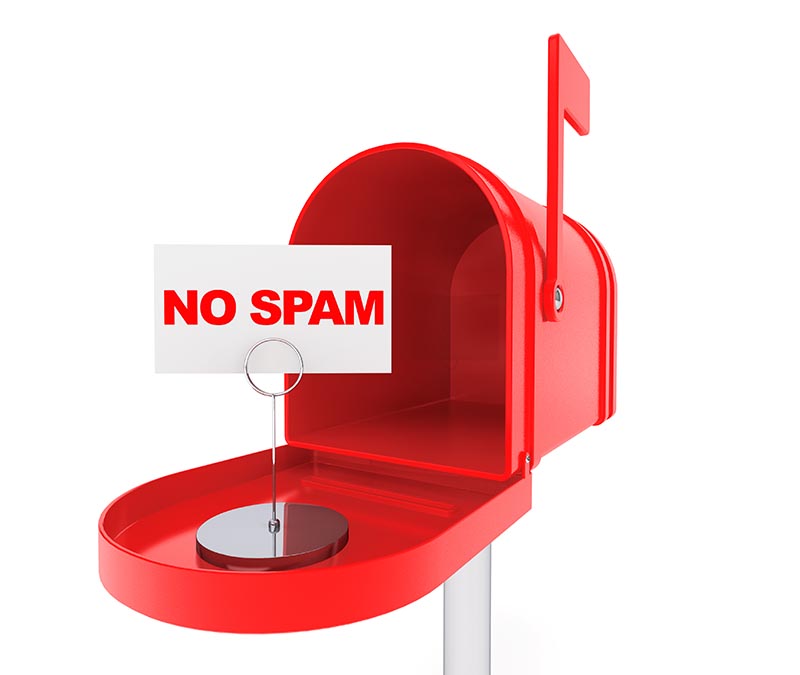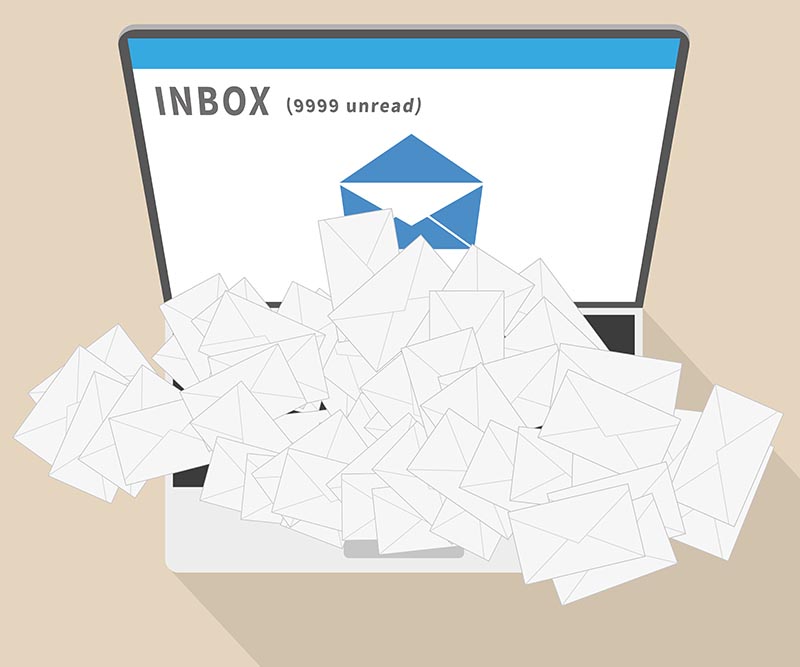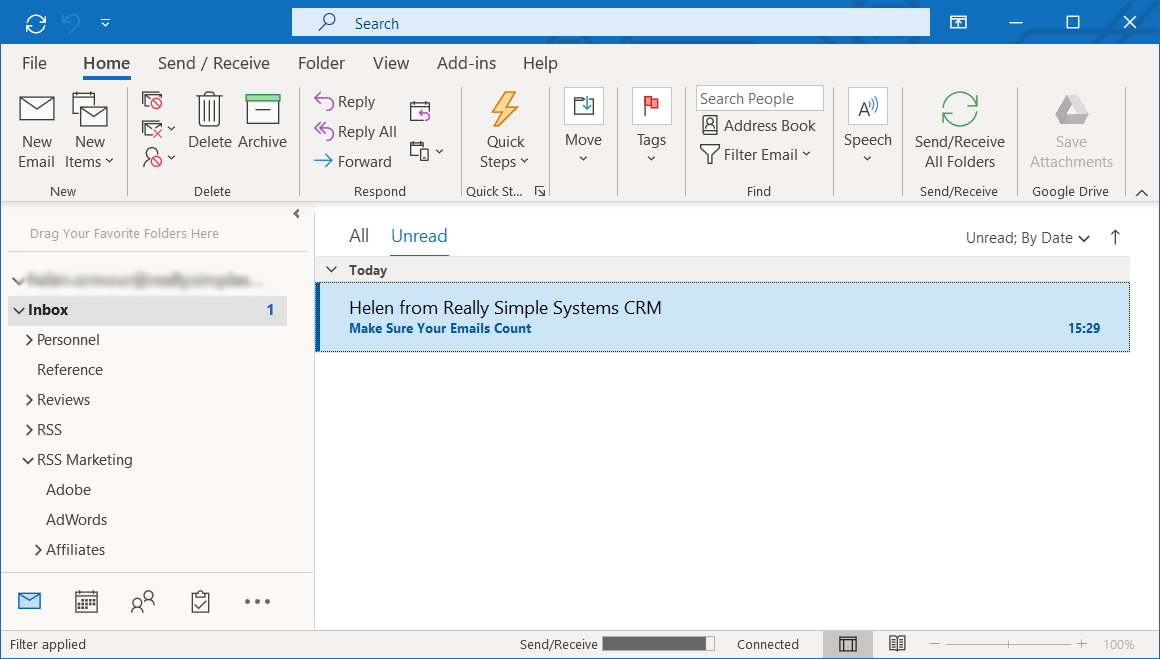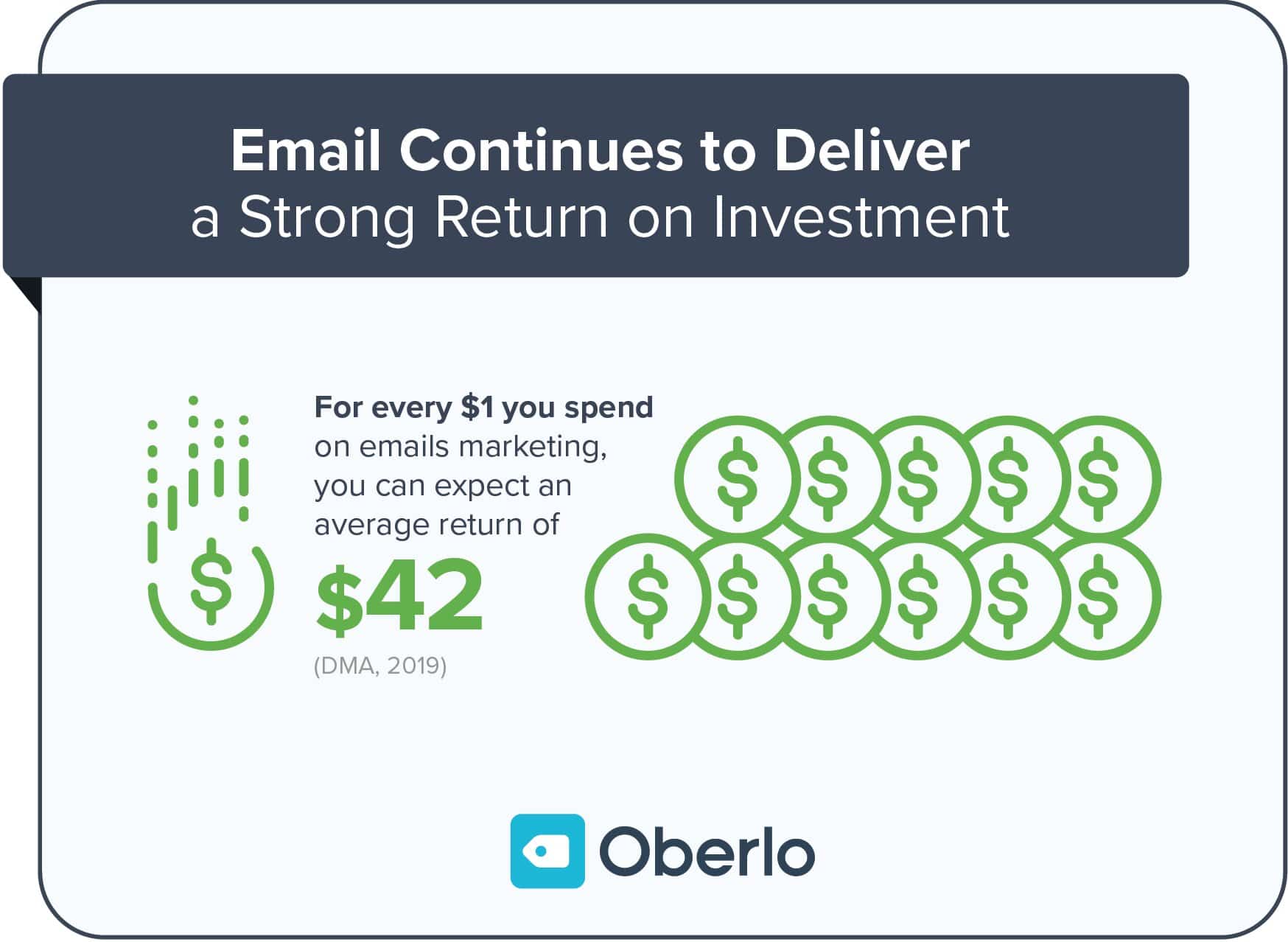How to Improve Your Email Deliverability
Review your email deliverability to make sure your email marketing is reaching your contacts’ inbox.

What is Email Deliverability and How to Improve it
We all like receiving mail, whether from friends, our favourite brands, social groups or general notifications. Apparently, so much so that we check our email inboxes an average of 15 times a day!
Research carried out by the DMA in the UK shows that in 2018 the ROI for email marketing showed a significant increase. For every £1 spent on email marketing there was an average return of £42. The data also suggests that email marketing becomes even more compelling when used in conjunction with other channels, such as social media.
If you’re running email marketing campaigns, you’ve no doubt thought long and hard about your email content, subject lines and CTAs. With each campaign you’ll be eagerly checking your open rate, click throughs and tracking your ROI.
But have you considered whether your emails are actually finding their destination? No matter how well-crafted your email might be, if they don’t reach your contact’s inbox, they count for nothing.
In this article we look at the factors that impact your email deliverability and the practical steps you can take to improve it. Remember, technology moves fast and you’ll need to review these measures regularly to give your emails a chance.
Contents
Types of Emails Sent
What is Email Deliverability?
What is an Email Service Provider?
Understanding Sender Reputation
Email Infrastructure
Email Authentication
Dos and Don’ts to a Good Sender Reputation
Improving the Customer Experience
Summary
Type of Emails Being Sent
In many cases, the business emails you are sending are essential and your contacts will be expecting them. If they fail to arrive, this is not only an inconvenience to your contact but could mean losing sales and brand loyalty.
Email deliverability is particularly important for transactional emails, for example:
Invoicing and billing queries
Password reset notifications
Receipts for goods or services
Confirmation messages
Form submission acknowledgements
Legal notifications
Your customer, followers and colleagues will also appreciate your more social emails:
Welcome message
Monthly newsletter
New blog content
Product updates
Event invitations
Staff newsletter

What is Email Deliverability?
Email deliverability is the ability to successfully deliver bulk emails to your contacts’ inboxes. If you get it right, your intended recipient will receive your message. Get it wrong, and your message is likely to end up in their spam folder or, worse still, blocked completely by their Email Service Provider.
What is an Email Service Provider
An Email Service Provider (ESP), or inbox provider, is the tool you use to send, receive, and read your emails. You might use an Email Client, such as Microsoft Outlook, or a Webmail app, where you access your email account via your internet browser, for example, Gmail or Yahoo.
To help protect their customers from receiving spam messages, computer viruses, and phishing messages, ESPs will scan the incoming email content and the credentials of the sender to determine its deliverability.
It used to be that spam filters just looked at the contents of an email to decide if it was spam or not. Now email providers use a host of more sophisticated metrics to decide, based on their experiences of millions of other emails that they are receiving.
The outcome of these checks will establish a limitation on your ability to send emails known as the Sender Reputation.
What is Sender Reputation?
Sender reputation is a score that ESPs gives you as a sender of mass emails. It is calculated based on a variety of factors:
Email content
Recipient engagement levels
Bounce rate
Spam complaints
Spam traps
Unsubscribes
Domain reputation
The aim here is to be acknowledged as a good sender by the ESPs.

Your sender reputation will improve as the ESP sees that your recipients are making positive engagement by opening your messages and clicking on your email links. To encourage more positive engagement, you need to create professional emails with appealing subject lines and interesting content that will resonate with the reader.
Conversely, if they react negatively by not opening, unsubscribing and, ultimately, marking your email as spam, this will give a strong indication that your emails are unsolicited.
If you have a bad sender reputation this will also affect the speed at which your email marketing software will deliver your emails. Your email delivery rate will be throttled back with the assumption that you are sending spam.
Deliverability Infrastructure
That said, there are many other factors that may affect your email deliverability, some of these are technical, but others are just good practice. If you are using good email marketing software, your provider will take care of many of these aspects, but you should check what is included in your price plan.
Prime Your IP Address
An important factor of email deliverability is the rate that your emails are sent at. The right balance needs to be maintained between getting a large volume of messages out in a reasonable time and not looking like a spammer.
Your emails are delivered from an IP address, and the ESPs will recognise the IP address your emails are coming from. Give them time to recognise that your emails are legitimate and wanted by starting with small batches at a time and build up slowly. Once the ESPs see that you are conducting good practice, you’ll be able to increase the volume.
Transactional v. Marketing Emails
If you are sending marketing emails as well as transactional emails you may want to split them out using two IP addresses. Then, should your marketing emails be marked as spam, it won’t impact your essential transactional emails.
The same goes for running multiple brands. Use a different IP address for each brand and again separate your transactional messages from marketing.
Dedicated or Shared IP
If you are sending a low volume of emails per month you can benefit from a shared IP address from your bulk emailing system. This helps keep the cost low but does mean you have no control over the sender reputation. However, if the sender activity is monitored, as with SpotlerCRM, then you may benefit from the good sender reputation of the collective users.
If you are sending a large volume of emails, say more than 10,000 emails per month, there are benefits to using a dedicated IP address. This gives you complete control of your sender reputation and lets you further support your deliverability by creating consistent sending patterns. For example, the volume of messages, day of the week and time of day.
Email Authentication
The next consideration is to guard against email spoofing by authenticating your emails. There are various processes available to validate that an email coming from you, is actually from you.
There are endless acronyms to get your head around here so do stick with us!
SPF Records
The first line of defence is the Sender Policy Framework (SPF). An SPF identifies the mail servers that are approved to send emails from a specific domain and protects against email spoofing. If spammers and phishers try to impersonate your company, the ESPs will use this validation protocol to detect them. The SPF is basically a line of text that is stored in the DNS (Domain Name System) and identifies the IP addresses authorised for that address.
However, publishing an SPF doesn’t mean you’re out of the water. It needs to be backed up by a series of other protocols to keep your email safe and deliverable.
DKIM Signature
Aimed at detecting forged sender addresses in emails, the DomainKeys Identified Mail (DKIM) is a digital signature that verifies the authentication of the sender. The DKIM signature guarantees that no part of the email has been modified during transit. Given the levels of email spoofing experienced today, it is unlikely that any email not including a DKIM signature would make it as far as anyone’s inbox.
At SpotlerCRM our email marketing software uses Twilio SendGrid to deliver your bulk emails and to track email opens, clickthroughs, bounces and unsubscribes. You can contact our Customer Support team for help in creating DKIM and SPF entries in your domain’s DNS settings.
Basic Dos and Don’ts to a Good Sender Reputation
With the technical stuff in place, we’ll move on to some housekeeping techniques. Adopting best practice here will go a long way to improving your sender reputation and so increasing your email deliverability.
Don’t Send from a Free Email Address
This is a simple one to start with. For your emails to be taken seriously by the Email Service Providers it helps to use a business email address (@yourbusiness.com) rather than a free one issued by Gmail (@gmail.com), Hotmail, Yahoo etc.
Anyone can set up a free email account, including spammers. A quick look at your junk mail will demonstrate this! Look to set up an email address with the same name as your website domain, or your business name, if that’s different. Your webhost probably provides this service as part of your hosting package.
Don’t Mail People You Have No Relationship With
While it might be tempting to buy a list of contacts that match your customer profile, don’t! This is one sure-fire way to damage your sender reputation. Only mail to people who you have a relationship with. For example, if they are an existing customer or have opted-in to receive your marketing messages. If not, they will be reaching for the spam button very quickly and nobody will get your email. You’ll get so much more from a smaller list of interested subscribers who genuinely want to know what you have to say and sell.
Ideally, you’ll want your contacts to have given consent to be mailed, using double opt-in consent. Double opt-in is when a person completes a web form for a mailing list and immediately receives an email asking them to confirm their subscription via a link. This avoids the possibility that somebody else would enter your email and sign you up without your permission.
Recent data protection legislation has made this practice law in many countries, for example, the EU’s General Data Protection Regulation (GDPR).
Remember your email recipients get to choose what they receive in their inbox and what they open. Honour their wishes by only mailing with what they have given you permission to send and make unsubscribing easy.

Clean Your Database Regularly
Email Service Providers will lower your sender reputation if your mailing receives a high number of ‘bounces’. ‘Soft bounces’ occur when an email address is temporarily unavailable, e.g. the mailbox is full. In this case your email marketing app will make repeated attempts to deliver the message. After three attempts it may then fall into the category of a ‘hard bounce’, i.e. undeliverable.
This is also the case should an email address or domain not exist, which can be a common problem with typing errors. You can guard against such issues by using the double opt-in method, suggested above, asking your contact to reconfirm the email address entered on the form or using a tool that suggests a typing correction (e.g. @gamil proposes @gmail) at the time of completion. In case you are using email finder tools, check if they can verify email lists as well.
Cleaning your database regularly to remove the bounced email addresses will help maintain a healthy sender reputation. If you are using good email marketing software like SpotlerCRM, any bounced emails will be put on “hold”, so no further emails are mailed to that address.
Data protection legislation also limits how long you can hold personal data for, ensuring it is proportionate to the initial inquiry. There’s no specific time period as the length of time will vary according to the industry and frequency of purchase. Think about what is suitable for your business and delete older records.
You might consider removing those contacts who have not engaged with your emails for some time.
Improving the Experience
Now, with the infrastructure, authentication and housekeeping taken care of, your emails will be finding their destination. However, you still need to consider how to stop the recipient from simply deleting or marking them as spam.
As discussed previously, to maintain your sender reputation your recipients need to be positively engaging with your emails. The first step is to make them relevant and interesting to the reader.
Segmentation
Don’t send the same email to all your database but instead use segmentation tools to group your contacts into relevant groups. You might filter by gender, geographic location, demographics, past purchases, interests, or any other data you might hold. This is where a good CRM system that’s integrated with your marketing software comes into its own.
Email Content
Take time to write engaging copy and subject lines that will appeal to these groups, encouraging them to open your message and click on your links. Think carefully about what’s relevant to the reader and also what’s professional. There’s a place for humour in email marketing but remember the written word can be interpreted differently by every reader.
If you are mailing internationally, you’ll also need to be sensitive to cultural differences. This might be simply variations on spellings or the use of idioms in text, but also knowing when public holidays fall through to what is acceptable behaviour.
The ratio of text to links to images and the language you use are also important. There needs to be a balance that doesn’t suggest to the ESPs that your message is spam. Too many links and you may have just undone all your hard work!
To help your recipient identify who the email is from use your company name in the “from” field.

Mobile Accessibility
Some 49% of emails in 2018 were opened on mobile phones, making mobile accessibility a key factor to your success. Use an email designer that is optimised for mobile use to make sure your emails look professional and your recipients can read your messages. SpotlerCRM’s email editor makes sure this happens automatically.
Mailing Frequency
How often is too often? Your mailing frequency will largely be governed by the content of your messages and your industry.
If you are providing useful content and advice that people want to read you can probably look to mail quite frequently, maybe once a week. If you are just promoting your products or services, this will depend upon the purchase frequency. For example, if you are selling consumables or clothing, then you can mail quite often. If you’re selling expensive items, like cars, then you’ll be mailing much less often.
Think about the emails you receive and what is compelling. Some stores mail daily, often repeating the same message or increasing their discount, which can be too much.

Consistent Schedule
What is also helpful is to keep a consistent schedule. This will help both in terms of your sender reputation and also the customer experience. If the ESPs recognise that you regularly mail at 10 am on a Wednesday this will help the authentication of your mailing. For the recipient, it’s about creating a relationship. Regular messages from trusted sources are more likely to be received positively than ad-hoc emails from sources they scarcely remember.
You might want to check your mailing statistics to see if there are any trends that suggest certain days and times have a higher engagement rate.
Permissions and Preferences
Regardless of how a contact came to be on your mailing list, it’s good practice, and in some countries the law, to give the recipient the chance to change their mind. Always include a link to unsubscribe and, if you have multiple mailing lists, to edit their preferences.
There is little point in mailing people who are not interested in your messages. If they decide later that they would like to hear from you again they can always opt back in.
Testing Tools
Having created your email there are quite a few tools on the market that you can use to test them. For example, Email on Acid and Mail Tester. Some require a subscription, and some are free. These testers sample your messages to score your deliverability and preview how the different email clients and devices will be presented your message.
Some will also identify if your IP address has succumbed to any blacklists letting you apply to be removed from the list.
Summary
By now you will have an appreciation of email deliverability. In short, if your emails are not reaching your recipient’s inbox, you are wasting your time. Having put the right infrastructure and processes in place, then you can start fine tuning your content.
Don’t forget though, as I said at the beginning, this is not a one-off process. You’ll need to review your email deliverability regularly, maybe annually, to make sure you’re giving your emails a chance.
As spammers and phishers become evermore sophisticated, so does the technology to beat them. Make sure you stay abreast what’s happening and update your processes.
Really Simple Systems is now Spotler CRM
The same great technology, a CRM platform that is focused on the needs of B2B marketers, provided by the same great team, at a great price!
